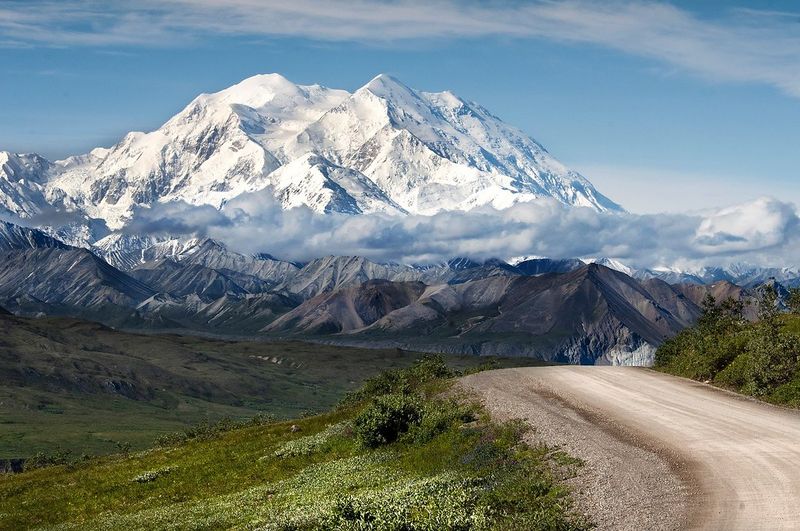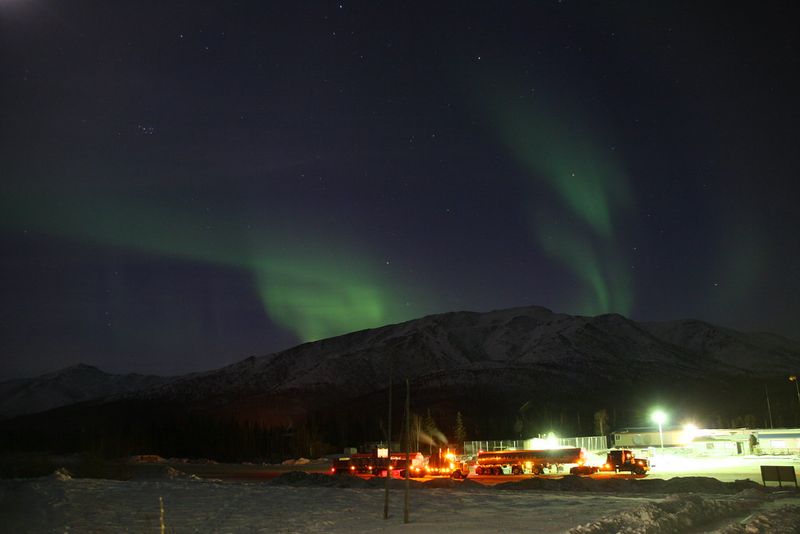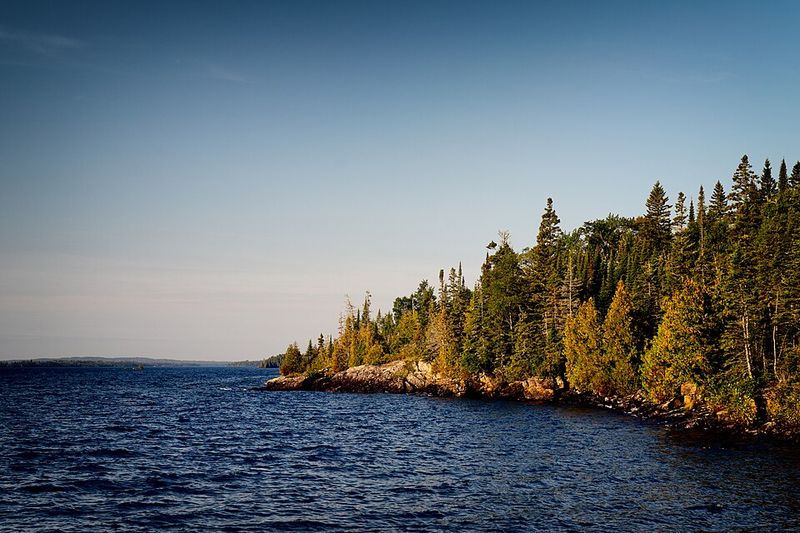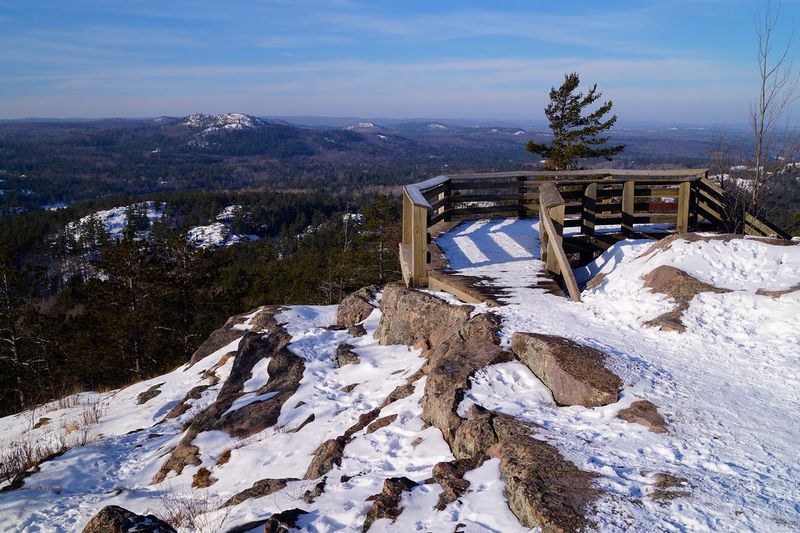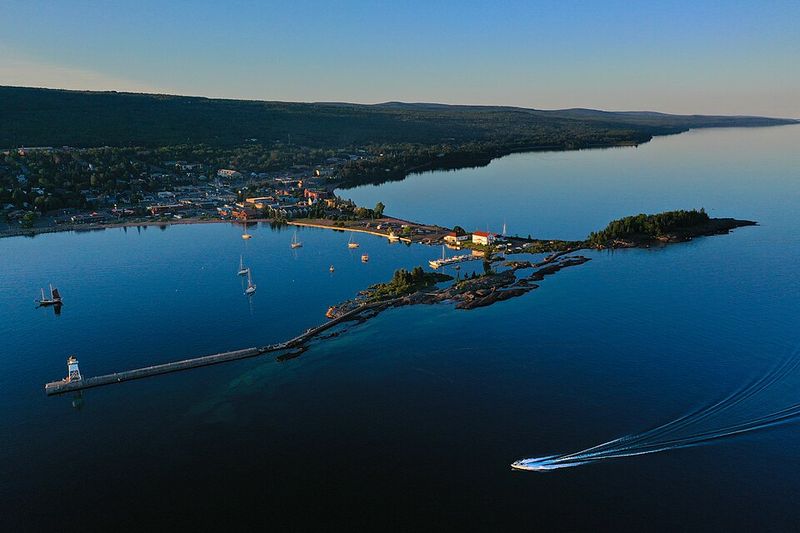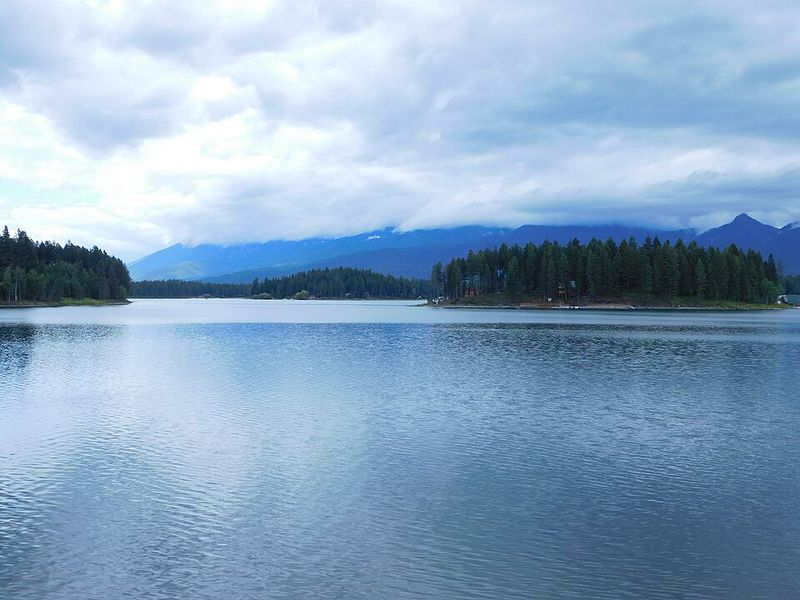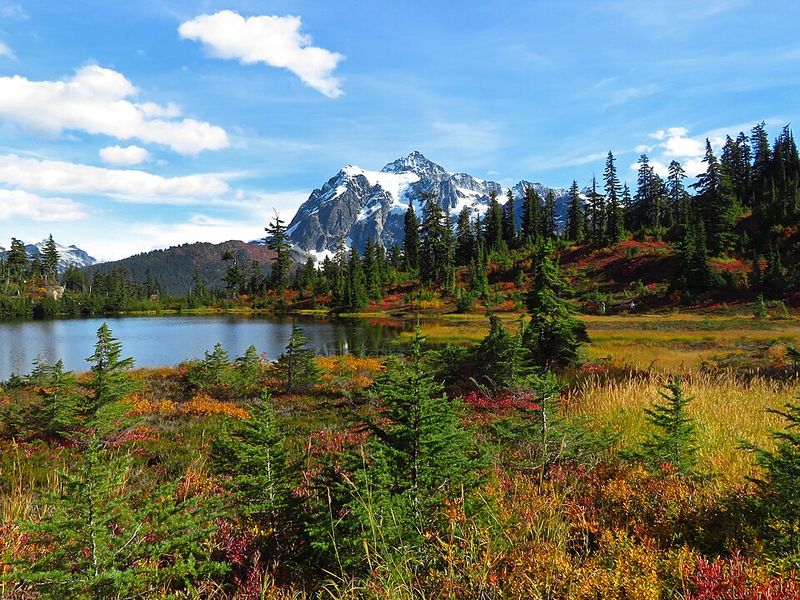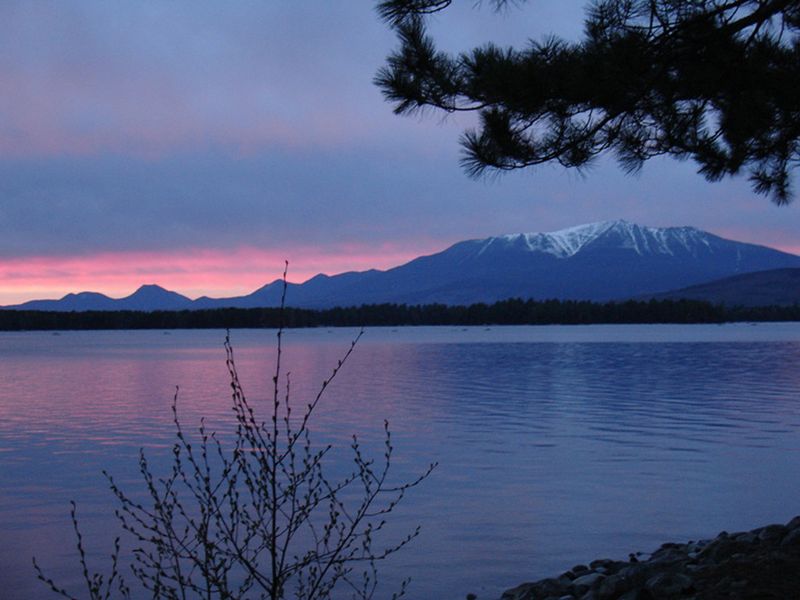Chasing the aurora in the U.S. doesn’t require crossing the Arctic Circle—if you know where to look. From secluded lakeshores to rugged national parks, these lesser-known destinations offer dark skies and jaw-dropping displays. Whether you’re a photographer, a stargazer, or a first-time chaser, each spot pairs celestial drama with unforgettable landscapes. Ready to trade city glow for cosmic glow? Start planning your northern lights adventure now.
Fairbanks, Alaska
Fairbanks is often considered America’s aurora capital, offering one of the most consistent and dazzling views of the northern lights anywhere in the world. From late August through April, the skies shimmer in greens, purples, and pinks. The city’s remote surroundings mean minimal light pollution, while the nearby Chena Hot Springs Resort allows visitors to soak beneath the glowing sky. With dedicated aurora lodges and tours designed around solar activity, Fairbanks remains the ultimate U.S. destination for witnessing nature’s most breathtaking light show. Book multiple nights to maximize your odds, monitor real-time KP indices, and head just outside town for darker horizons. Bundle up, bring a tripod, and prepare for sleepless, wonder-filled nights.
Denali National Park, Alaska
Far from city lights, Denali National Park offers pristine, unspoiled darkness—perfect for northern lights viewing. The park’s rugged wilderness and snow-capped peaks make the aurora seem even more dramatic. Winter brings long nights ideal for photography, while visitors in fall can sometimes catch the lights dancing above Denali’s towering summit. Whether camping under the stars or staying in a cozy nearby lodge, this Alaskan wonderland delivers an unforgettable show in one of the most majestic settings on Earth. Check weather windows carefully and carry layered clothing for subzero nights. Pullouts along the park road provide grand vistas; bring spare batteries, as cold drains power fast. When the KP surges, the sky ignites in sweeping arcs and pulsing pillars.
Coldfoot, Alaska
Located along the remote Dalton Highway, Coldfoot sits directly under the auroral oval, giving it one of the highest probabilities for northern lights sightings in the U.S. The isolation here is profound—miles of wilderness, snow, and silence. This former gold mining camp now serves as a base for adventurous travelers seeking the purest possible view of the aurora. With minimal development and zero light pollution, the colors here burn brighter and wilder than almost anywhere else in America. Join guided night shuttles or venture to open turnouts for sweeping horizons. Dress for extreme cold and bring hot beverages to linger comfortably. On clear nights, towering rays dance from horizon to zenith, turning the Arctic sky into a living cathedral of light.
Isle Royale National Park, Michigan
Accessible only by boat or seaplane, Isle Royale is one of America’s least-visited national parks—and one of its most magical for aurora watchers. Located in Lake Superior near the Canadian border, its isolation means pitch-dark skies ideal for seeing the northern lights. During late summer and early fall, when solar activity peaks, the aurora often reflects off the lake’s surface, creating an ethereal double display. The quiet wilderness adds to the surreal sense of witnessing something almost otherworldly. Plan logistics carefully; services are limited and weather can shift quickly. Choose sheltered coves for wind protection and stable reflections. When the geomagnetic conditions align, ribbons of color ripple across Superior, painting the night with luminous, liquid fire.
Marquette, Michigan
On the southern shore of Lake Superior, Marquette combines easy access with jaw-dropping northern lights views. Locals head to Presque Isle Park or Sugarloaf Mountain when the aurora forecast is strong, watching the sky explode in greens and violets over the lake. The area’s cold, clear nights and northern latitude make it one of the Midwest’s best-kept secrets for aurora seekers. Between the natural beauty and small-town charm, Marquette offers a perfect mix of comfort and spectacle. Check short-term cloud forecasts and aim for lakefront sightlines facing north. Even modest KP events can glow above the horizon. Warm cafes and craft breweries nearby make post-aurora debriefs cozy, while shore ice adds brilliant foreground sparkle in winter.
Voyageurs National Park, Minnesota
Named for the French-Canadian explorers who once paddled these lakes, Voyageurs is a dark-sky paradise. Its remote waterways and vast forests offer mirror-like reflections of the northern lights across Rainy Lake and Kabetogama Lake. Winter brings prime conditions—cold, crisp air and cloudless nights. The park is so far north that even moderate solar storms can ignite the sky. Visitors who brave the cold are rewarded with one of the most peaceful and awe-inspiring aurora experiences in the continental U.S. Use ice roads or guided tours for safe access; open horizons are key. Bring microspikes and hand warmers, and frame compositions with islands or pines to anchor the light show’s sweeping curtains and rays.
Ely, Minnesota
Nestled on the edge of the Boundary Waters Canoe Area Wilderness, Ely offers some of the darkest skies in the lower 48 states. With almost no artificial light, this small town is a haven for both stargazers and aurora hunters. Locals recommend heading to Shagawa Lake or Burntside Lake for open horizons. On the right night, shimmering curtains of green and red ripple across the water. It’s a perfect destination for those who want to pair adventure with tranquility. Watch the KP index and head out after moonset for best contrast. Dress warmly, keep headlights off near shorelines, and let your eyes adapt. The stillness amplifies every ripple of light and sound.
Cook County, Minnesota
The far northeastern tip of Minnesota offers an incredible combination of forest, lake, and northern latitude ideal for aurora viewing. From Grand Marais to the Gunflint Trail, countless secluded spots provide unobstructed night skies. The nearby Superior National Forest is officially designated a Dark Sky Sanctuary, making it one of the best protected areas in the country for natural light shows. In winter, the lights often dance above frozen lakes, transforming the landscape into a glowing dreamscape. Check road conditions and choose safe pullouts along the trail. Local outfitters share real-time alerts when the KP spikes. Framing the aurora with snow-laden spruce adds depth, while crystalline air makes colors pop with astonishing intensity.
Glacier National Park, Montana
Few places rival the grandeur of Glacier National Park—and when the northern lights appear, the spectacle is almost transcendent. From Bowman Lake to Many Glacier, the park’s alpine lakes and jagged peaks provide perfect backdrops. The best months are from late September through March, when nights are longest. Glacier’s designation as an International Dark Sky Park ensures minimal light pollution, letting visitors witness the aurora in its purest, most vibrant form. Arrive early to scout compositions and stay late as colors intensify. Mountain weather changes quickly, so pack layers and traction. Even faint activity becomes breathtaking when framed by serrated skylines and mirror-still waters.
Cherry Springs State Park, Pennsylvania
Though far south of the Arctic Circle, Cherry Springs State Park has earned a reputation as one of the best stargazing locations in the eastern U.S. On rare nights of high solar activity, the northern lights can make a surprise appearance here. The park’s certified Dark Sky status and high elevation give it an edge for clear, crisp views. Even when the aurora doesn’t show, the Milky Way alone makes the journey worthwhile. Check space weather alerts and be patient—subtle arcs can brighten rapidly during substorms. Follow red-light rules on the astronomy field and protect night vision. With luck, a faint glow blossoms into pillars that ripple above the tree line.
Bigfork, Montana
This charming small town near Flathead Lake sits far enough north—and dark enough—to catch frequent aurora displays. Locals often head to the lakefront or nearby Jewel Basin for sweeping northern views. With the Northern Rockies as a backdrop, even faint auroras look stunning. Bigfork’s blend of rustic comfort and wide-open wilderness makes it one of the most accessible “hidden” northern lights spots in the U.S. Watch the forecast and reposition along the shoreline for reflective compositions. Shoulder seasons offer longer nights with fewer crowds. After the show, warm up with a late-night drink and relive the spectacle as shimmering colors fade behind snow-dusted peaks.
Priest Lake, Idaho
In northern Idaho, Priest Lake offers pristine wilderness and minimal artificial light—making it a surprising but excellent aurora viewing location. The reflections of the lights across the still water and the silhouette of surrounding pines create an atmosphere of calm magic. The best time to visit is late winter or early spring, when the nights are long and skies are clearest. It’s one of the lower 48’s most underrated northern lights destinations. Choose north-facing coves and watch for sudden intensifications known as breakups. Bring a thermos and a chair, and let the silence heighten every color shift. When conditions peak, luminous pillars march across the lake like spectral beacons.
North Cascades National Park, Washington
While many associate Washington with rain, the eastern edges of North Cascades National Park have clear skies and high-altitude vantage points perfect for catching the aurora during strong solar storms. Hidden viewpoints like Diablo Lake Overlook and Washington Pass offer expansive northern horizons. The jagged peaks, alpine lakes, and vibrant colors combine to create one of the most dramatic landscapes for an aurora sighting anywhere in America. Aim for moonless nights to deepen contrast and reveal structure in rays. Check pass conditions and snow closures before committing. When the KP surges, the sky electrifies, casting ghostly hues across serrated ridgelines and glassy water.
Baxter State Park, Maine
Home to Mount Katahdin, Maine’s highest peak, Baxter State Park is a northern gem for viewing the aurora borealis. Far from major towns and with no artificial lighting inside the park, the skies here are pristine. On clear, cold nights, vibrant greens and purples sometimes spill across the horizon, reflected in the park’s quiet lakes. Pair that with the silence of the forest and the crisp mountain air, and you have one of America’s most peaceful aurora-viewing escapes. Reserve campsites early and check park access rules, especially in winter. North-facing shorelines provide ideal sightlines. As the aurora intensifies, Katahdin’s silhouette becomes a dramatic, timeless stage for celestial fire.


